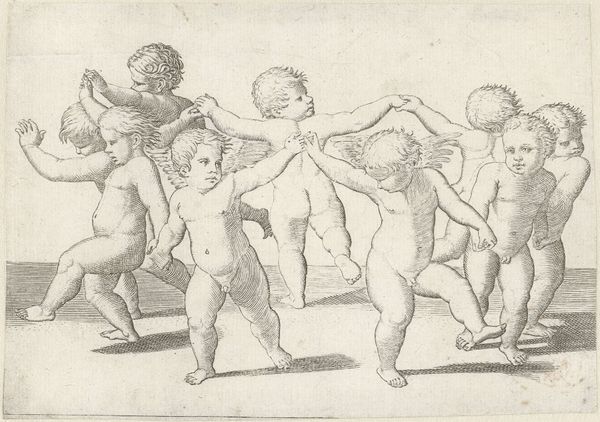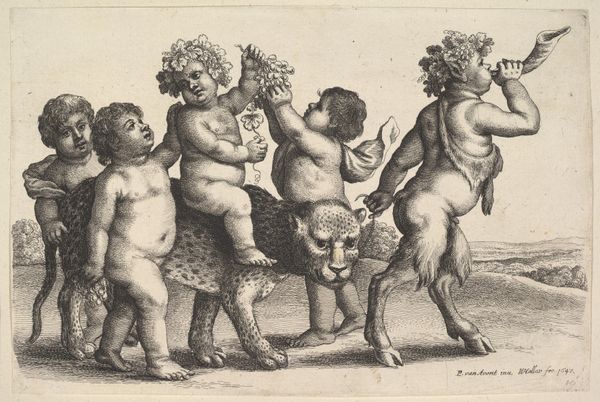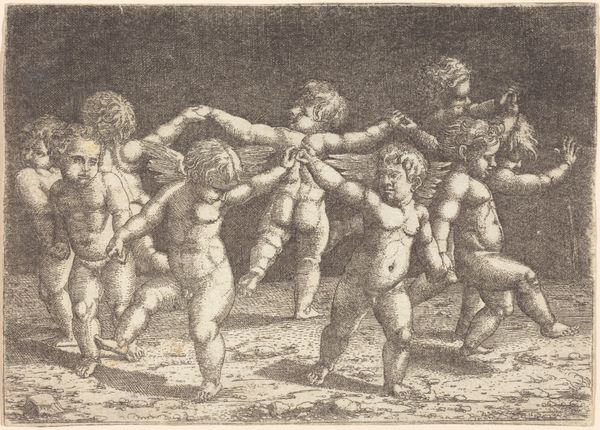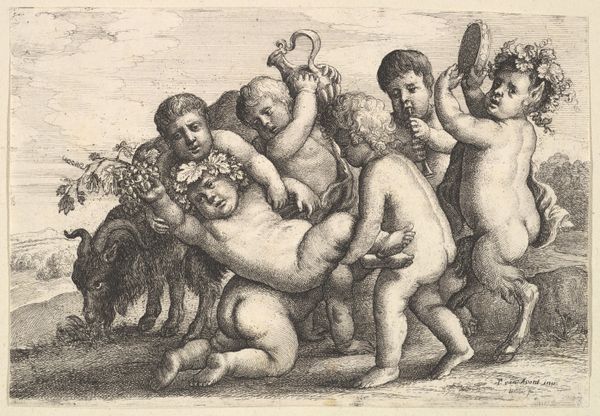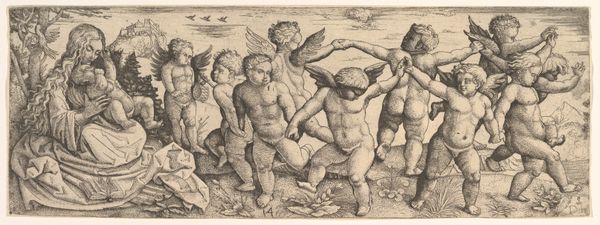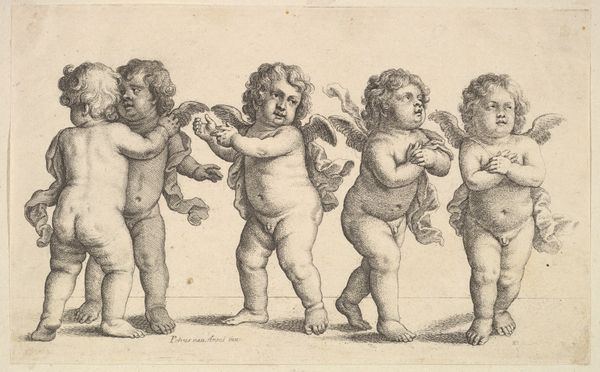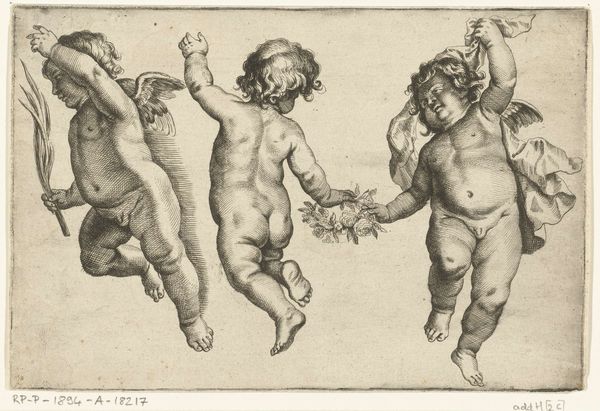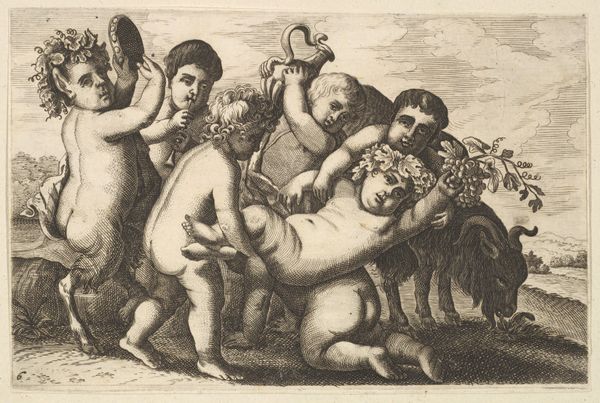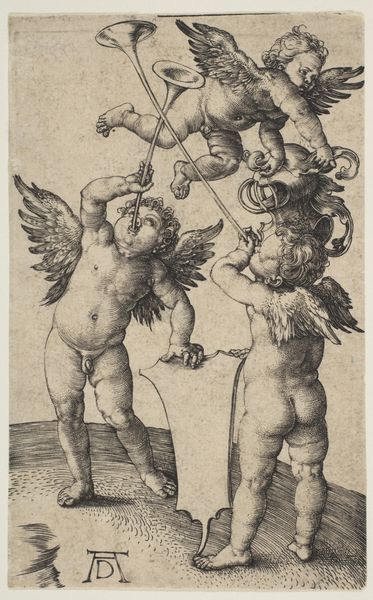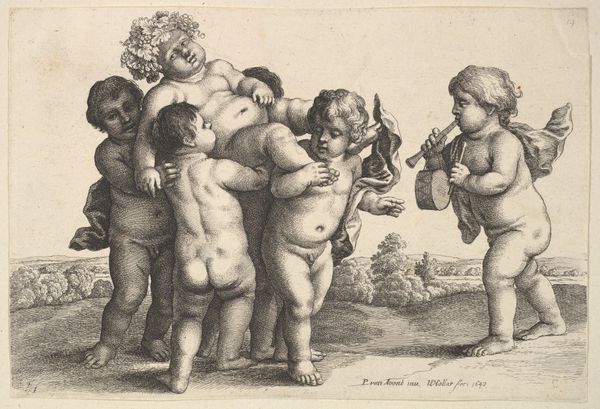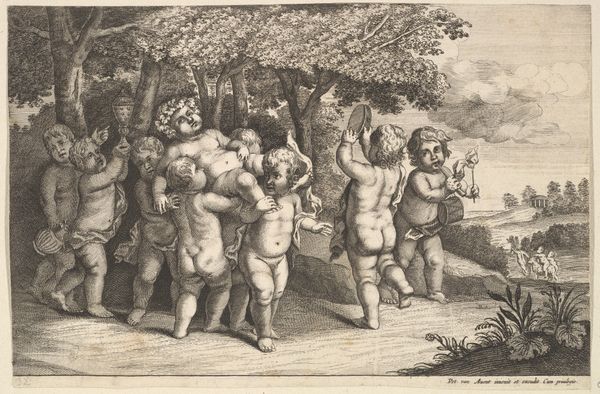
drawing, print, paper, engraving
#
drawing
#
narrative-art
# print
#
figuration
#
paper
#
form
#
11_renaissance
#
line
#
italian-renaissance
#
engraving
Dimensions: 110 × 166 mm (image/sheet)
Copyright: Public Domain
Editor: Here we have Marcantonio Raimondi's "Dance of Cupids," made between 1517 and 1520. It's a print, an engraving on paper, and the overall mood feels quite joyous. I’m intrigued by the robust figures of these cupids. How do you interpret this work? Curator: Well, on one level, we can read this as a celebration of the human form, echoing the Renaissance's renewed interest in classical ideals. But let's not shy away from the complexities here. The eroticism embedded in these chubby, idealized, infantile male bodies can be unsettling. We must consider this depiction in relation to societal norms around sexuality and the male gaze of the period. Editor: So, are you suggesting that the print engages with power structures beyond just aesthetic beauty? Curator: Precisely. The dance itself could be interpreted as a symbolic ritual, perhaps indicative of social control and performative masculinity within Renaissance culture. What do we make of the lack of individuality of these figures? The almost disturbing similarity among them? Editor: I see your point. They're meant to represent love, but there's something almost regimented about their uniformity and choreographed movement. Curator: The engraving, as a medium, further complicates this. It was designed for mass reproduction, indicating the circulation and normalization of these ideals. What does it mean when an image like this becomes widely available and consumed? Editor: It's like the Renaissance version of a meme, spreading specific ideas about beauty and perhaps, subtly, about gender. Curator: Yes, it reveals how ideologies are constructed and disseminated. Raimondi’s work urges us to ask probing questions about the relationship between art, power, and representation. It seems like beauty standards haven't changed so much at all. Editor: I will never be able to see cupids again without questioning the social and historical constructs embedded in their dance. Thanks!
Comments
No comments
Be the first to comment and join the conversation on the ultimate creative platform.



